 Pardot connector
Pardot connector
The Optimizely Digital Experience Platform contains many features to support you in your daily work. Depending on how your solution is set up, some features described in this documentation may not be available to you. Contact your system administrator to find out more. See Optimizely World for technical information.
The Pardot® connector add-on automatically exports form data from your website to your Pardot account database by mapping Optimizely form fields to Pardot database fields. For information about other database connector add-ons, see Marketing Automation.
In 2020, Pardot added a more modern, consistent, and secure method for authenticating to the Pardot API. The newly supported authentication method leverages the familiar Salesforce OAuth flows using your Salesforce users, no longer requiring a one-off Pardot-only user.
Setting up Optimizely forms with Pardot
The Forms Marketing Automation Integration (MAI) connector lets you connect Optimizely form fields to a Pardot database. See also: Marketing Automation.
A developer must install the Forms Marketing Automation connector and the Pardot connector. See Optimizely World for more information.
- In the Optimizely CMS admin view, select Config > Tool Settings > Pardot. The Pardot configuration settings screen appears. Specify the following information.
After you upgrade to Pardot connector version 6, delete the older configurations from the Admin view (click Remove) and save new credentials. Older configurations will no longer work.
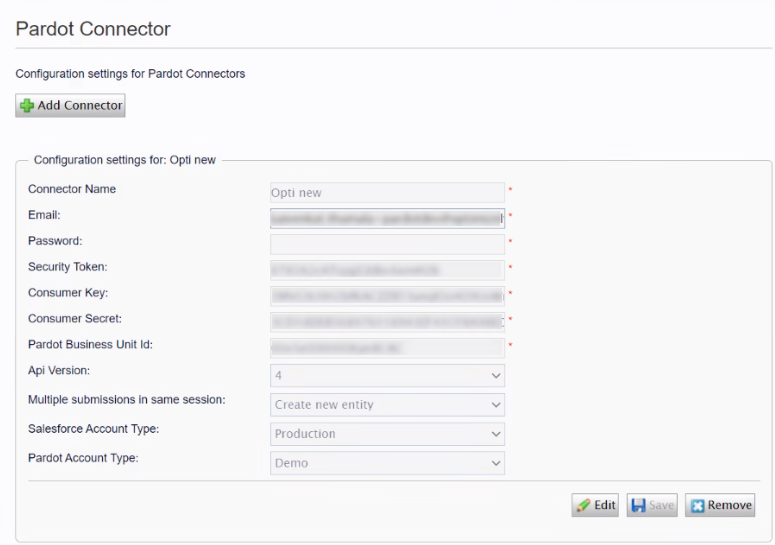
- Connector Name. Enter a name for the connector.
- Email. Enter the user name of the Salesforce administrator.
- Password. Enter a password.
- Security Token. Enter the security token that is associated with your Salesforce administrator.
- Consumer Key. Associated with your Salesforce Connected App. See Setting up a connected app (a section in a Salesforce blog post called Setting Up Salesforce OAuth for Pardot API Authentication).
- Consumer Secret. Associated with your Salesforce Connected App. See Setting up a connected app (a section in a Salesforce blog post called Setting Up Salesforce OAuth for Pardot API Authentication).
- Pardot Business Unit ID. Enter the Pardot business unit you want; each Salesforce organization can support more than one Pardot business units.
- Api Version. Select 3 or 4 (default is 4). To determine which API version that your Pardot organization supports, see What is Version 4?.
- Multiple submissions in the same session. Select either Create new entity or Update previously created entity.
- Salesforce Account Type. Select Production or Sandbox.
- Pardot Account Type. Select Production or Demo.
You can have multiple instances of the same connector. For example, if you have marketing teams in separate regions, you can have more than one Pardot connector such, as Pardot - Europe, Pardot - US, and Pardot - APAC. Click Add Connector to add another instance.
- Click Save.
- Create a form on a page.
- Click All Properties on the form.
- Open the Mappings tab.
- Select the Prospect database to which you map the form fields from the MA System Database drop-down field.
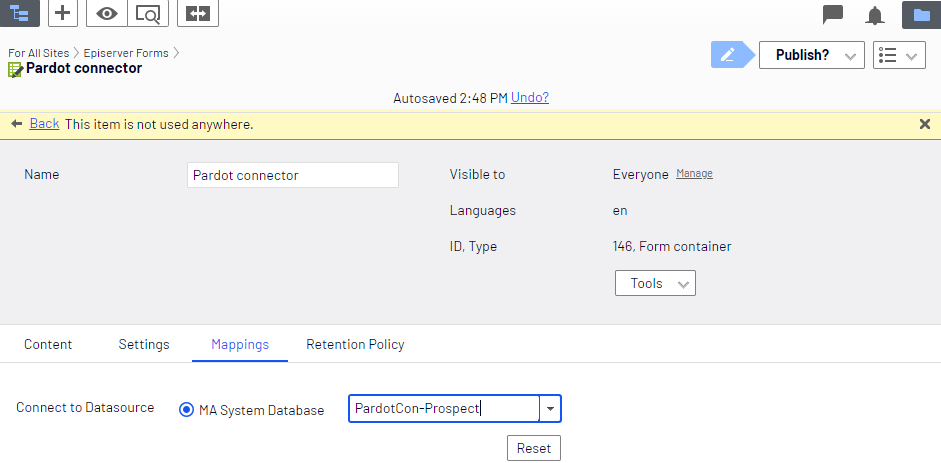
- Click Publish.
- On the form, select Edit from a form field's context menu.
- Open the Extra field mappings tab. The database option that you selected earlier appears.
- Enable the database option and open the associated drop-down list to see the fields it has available. For example, if your form has a Text field that was configured to capture an email address:
- Edit the email text field.
- Select the Extra field mappings tab.
- Select email from the drop-down list to map the Pardot database field to the Email field on the form.
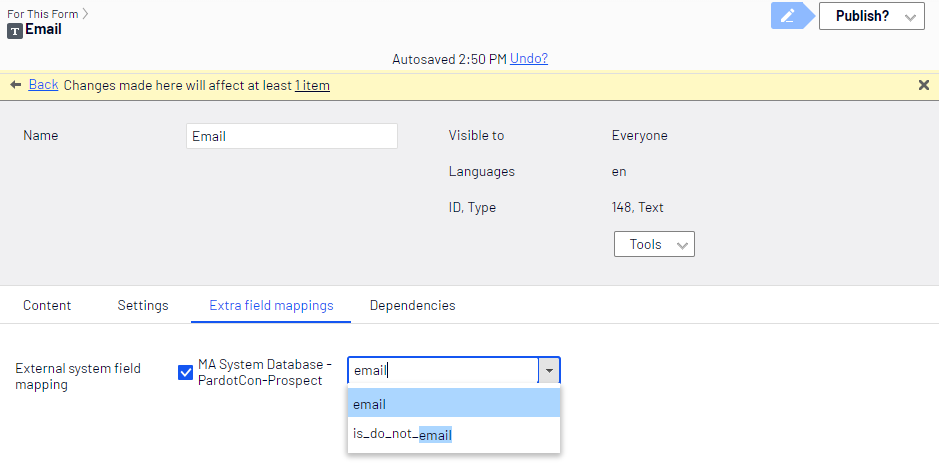
- Repeat steps 8 through 10 for as many fields that you want to map.
- Click Publish.
To test the mapping, go to your form on a published page, fill in and submit the form, then go to your Pardot provider to verify that the user is added to the Pardot database.
Retrieving contact data
When a visitor submits the form, the data is sent to the Pardot database. To see who submitted the form, go to Pardot > Prospect > Prospect List and select the contact list.
Personalizing the form using a block
You can personalize a form to show only to a selected group of people. For more information about creating a visitor group and displaying information based on a visitor group, see Managing visitor groups.
- From the context menu on the form on the page, select Personalize. The Large content area dialog box appears.
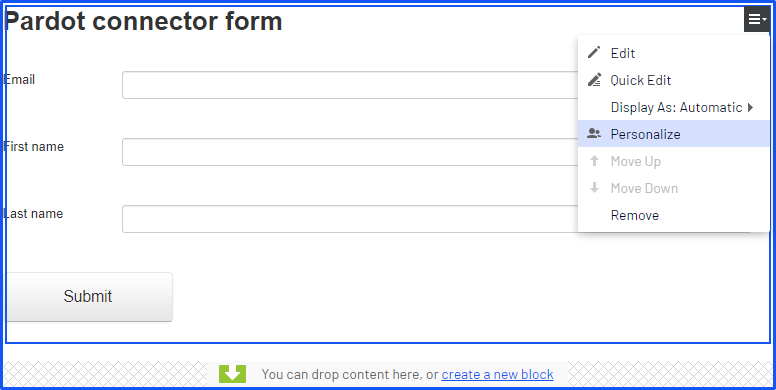
- Click Everyone and select a visitor group from the list. The following image shows personalizing the form to show only for people in the VIP visitor group.
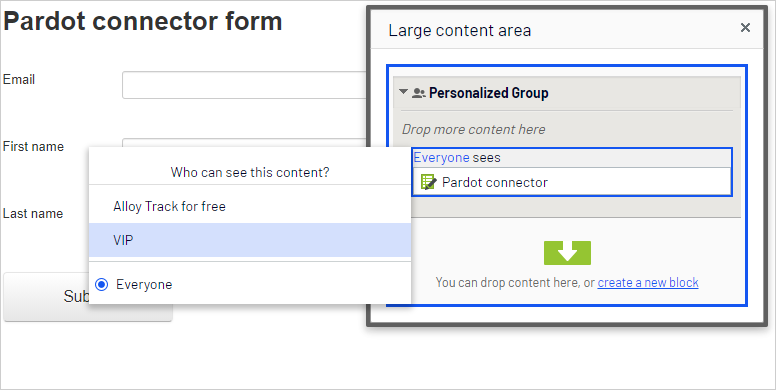
To create a visitor group for a Pardot form, see Create a visitor group for an MAI connector form.